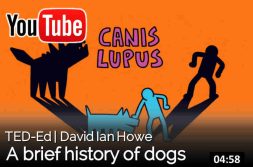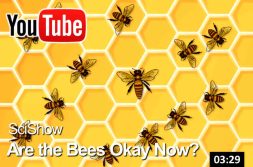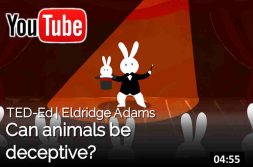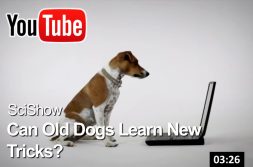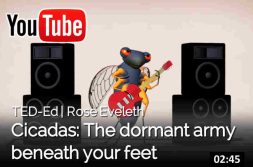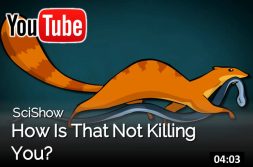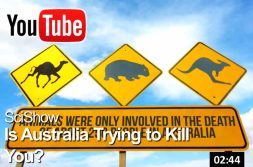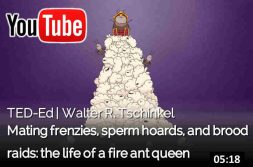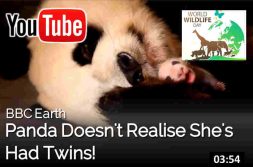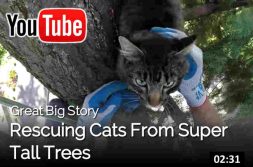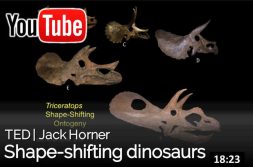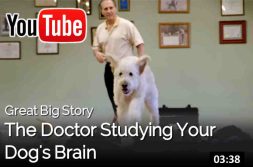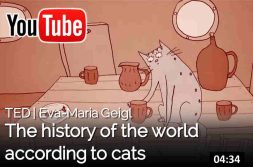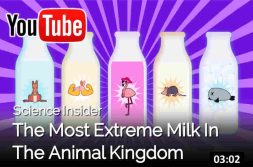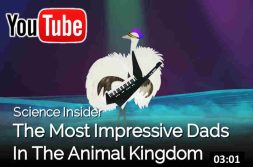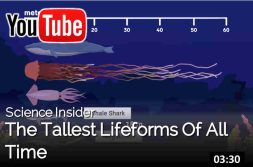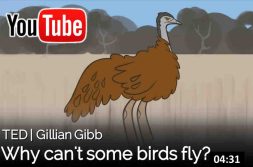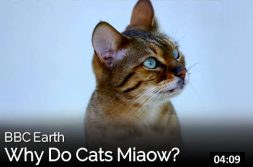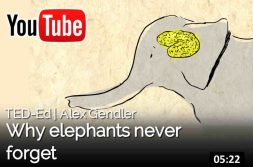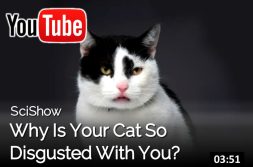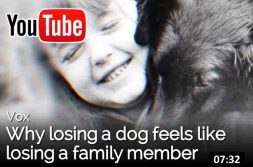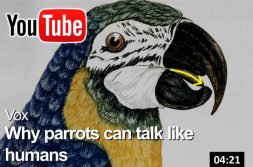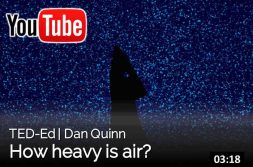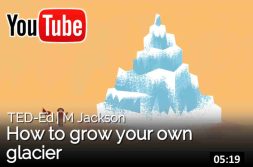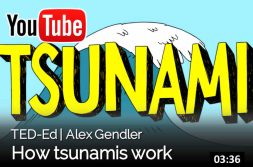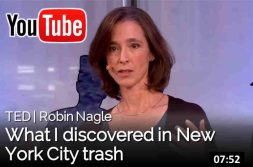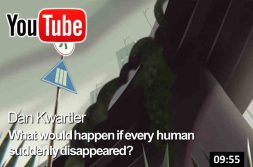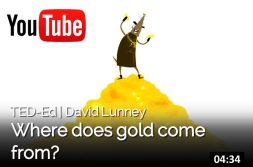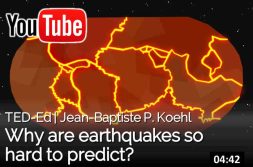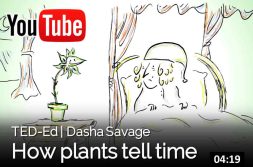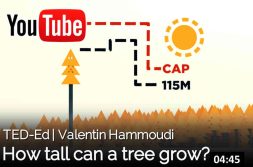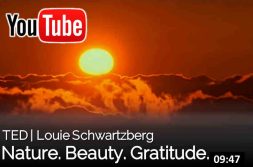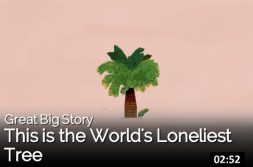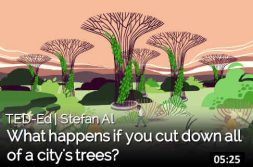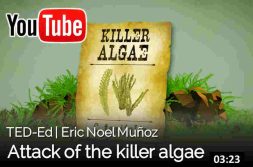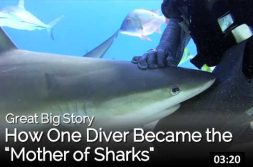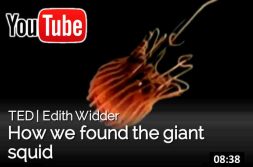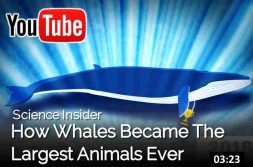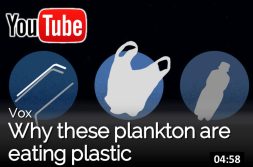Nature & Environment
Animals
[more]
Since their emergence over 200,000 years ago, modern humans have established communities all over the planet. But they didn’t do it alone. Whatever corner of the globe you find humans in today, you’re likely to find another species as well: dogs. So how did one of our oldest rivals, the wolf, evolve into man’s best friend? David Ian Howe traces the history of humanity’s first domesticated animal.
Lesson by David Ian Howe, directed by Cabong Studios.
[less]
[more]
[less]
[more]
Lesson by Eldridge Adams, directed by The Duke and the Duck.
[less]
[more]
Have you ever wondered what it would be like to be an animal? This series gives startling and revelatory answers. Combining jaw-dropping demonstrations of animals’ abilities with revealing photography, Chris Packham travels the world to uncover the secrets of the animal mind.
Chris explores the remarkable ways animals use their senses. Focusing on dogs, he discovers how their powerful sense of smell creates a bizarre alternative reality.
[less]
They say that you can’t teach an old dog new tricks — but that saying might not be as trustworthy as you’d think.
Hosted by: Olivia Gordon
[more]
Lesson by Rose Eveleth, animation by Eli Enigenburg.
[less]
When Hank watches nature documentaries he always comes away with one big question: how is that not killing you? In today’s episode of SciShow he looks at three unusual ways that animals manage not to get killed by nature.
[more]
Hosted by: Stefan Chine
[less]
[more]
In the spring, just after a heavy rainfall, male and female fire ants swarm the skies for a day of romance, known as the nuptial flight. Thousands of reproduction-capable ants take part in a mating frenzy, and for one successfully mated female, her work is only beginning. Walter R. Tschinkel details how the new queen builds a colony and protects it from neighboring ant armies.
Lesson by Walter R. Tschinkel, directed by Lisa Vertudaches.
[less]
When having multiple cubs, pandas will usually only care for one baby and abandon the other, but switching them around might be the key for both twins’ survival. Narrated by David Attenborough.
[more]
[less]
Where are the baby dinosaurs? In a spellbinding talk from TEDxVancouver paleontologist Jack Horner describes how slicing open fossil skulls revealed a shocking secret about some of our most beloved dinosaurs.
[more]
[less]
[more]
Lesson by Eva-Maria Geigl, directed by Chintis Lundgren.
[less]
[more]
[less]
[more]
[less]
If you doubled in size, your weight would be eight times greater. That’s the trouble with growing tall. Gravity’s pull is keeping us all down. But there are a few earthly giants that have fought gravity and won.
[more]
Lesson by Gillian Gibb, directed by Anton Bogaty.
[less]
Dr John Bradshaw explains why pet cats constantly miaow at their owners. Taken from Cats Uncovered.
[more]
Lesson by Alex Gendler, animation by Avi Ofer.
[less]
Sometimes your cat looks at you like they’re just absolutely revolted. So, does your cat think you’re gross?
[more]
When Alvin lost his dog Rainbow, he felt as though a human has died.
Humans have a special — and somewhat an odd — relationship with dogs. 60% of Americans own a pet, and the most popular of them are dogs. Our relationship with them actually goes back pretty far. Some scholars believe that wolves and humans hunted and lived among each other — and the reason humans came out on top was because we partnered with wolves. Then, as we evolved so did our furry friends. Now, we treat these animals like family. We give them names, keep them safe, and share our lives with them. So when it’s time for them to go, it feels a lot like we’re losing a part of the family.
[less]
Monkeys are our closest biological relatives, and they can’t speak. But parrots don’t seem to have a problem at all.
Environment
[more]
[less]
[more]
Lesson by Dan Quinn, animation by Sandro Katamashvili.
[less]
[more]
In the 13th century, Genghis Khan embarked on a mission to take over Eurasia, swiftly conquering countries and drawing them into his empire. But, legend has it that there was one obstacle that even he couldn’t overcome: a towering wall of ice, grown by locals across a mountain pass. M Jackson explores the ancient methods of growing glaciers and how they can be used to combat climate change.
Lesson by M Jackson, directed by Artrake Studio.
[less]
[more]
Lesson by Alex Gendler, animation by Augenblick Studios.
[less]
[more]
Lesson by Graeme Anderson, animation by D. Lee Peffer II.
[less]
[more]
[less]
[more]
Lesson by Dan Kwartler, directed by Globizco Studios.
[less]
[more]
Lesson by David Lunney, animation by Andrew Foerster.
[less]
[more]
In 132 CE, Zhang Heng presented his latest invention: a large vase he claimed could tell them whenever an earthquake occurred for hundreds of miles. Today, we no longer rely on pots as warning systems, but earthquakes still offer challenges to those trying to track them. Why are earthquakes so hard to anticipate, and how could we get better at predicting them? Jean-Baptiste P. Koehl investigates.
Lesson by Jean-Baptiste P. Koehl, directed by Cabong Studios.
[less]
Nature
[more]
[less]
[more]
[less]
[more]
Lesson by Dasha Savage, animation by Avi Ofer.
[less]
[more]
Lesson by Valentin Hammoudi, directed by Doug Alberts.
[less]
[more]
Glands in the lobes then secrete enzymes that break the dinner down into a digestible soup. Ten days later, the trap pops open to reveal nothing but a dried out husk.
David Attenborough looks at the extraordinary ends to which animals and plants go in order to survive. Featuring epic spectacles, amazing TV firsts and examples of new wildlife behaviour.
[less]
[more]
[less]
[more]
[less]
[more]
[less]
[more]
[less]
[more]
Lesson by Stefan Al, directed by Mette Ilene Holmriis.
[less]
Oceans
Lesson by Eric Noel Muñoz, animation by Eli Enigenburg.[/show_more]
[more]
[less]
[more]
[less]
[more]
[less]
[more]
[less]
When you think of marine pollution, you might picture an oil-slicked seal struggling to breathe on a blackened
[more]
Microplastics — meaning any plastic object smaller than five millimeters — constitute the vast majority of plastic particles polluting marine habitats.
Of those microplastics, a large share are microfibers: tiny strands of plastic that are woven into fabric used to make clothing. These fabrics, known by names like polyester and nylon, are cheap to produce, comfortable to wear, and since arriving on the market in the late 1940s, companies have been using more and more of them. Every time we do laundry, a small amount of microfibers are separated from clothes made from these materials. Since those pieces of plastic are extremely small, they’re able to make their way through water treatment centers and into marine resources. Once they reach marine habitats, the ocean’s tiniest creatures consume them, and microfibers work their way up the food chain. Eventually, they reach us.
[less]
